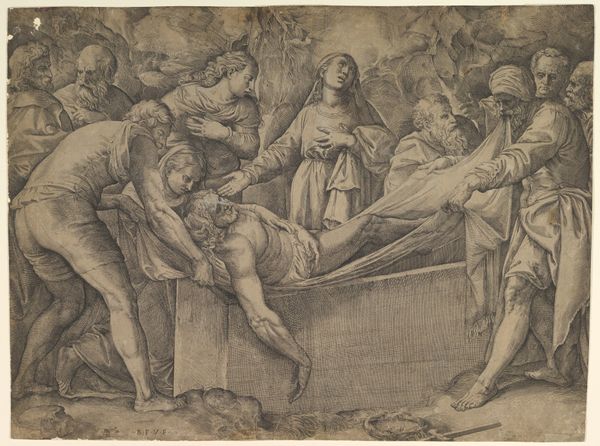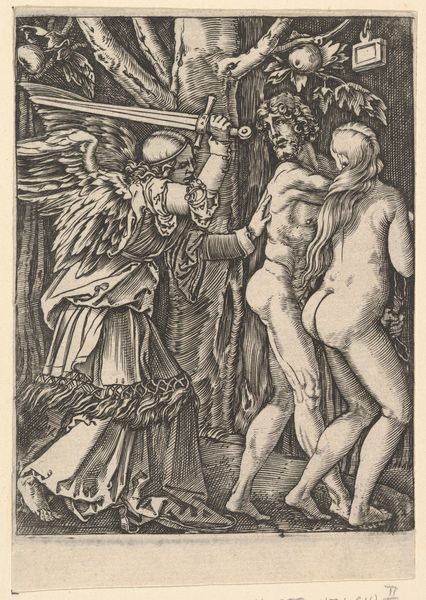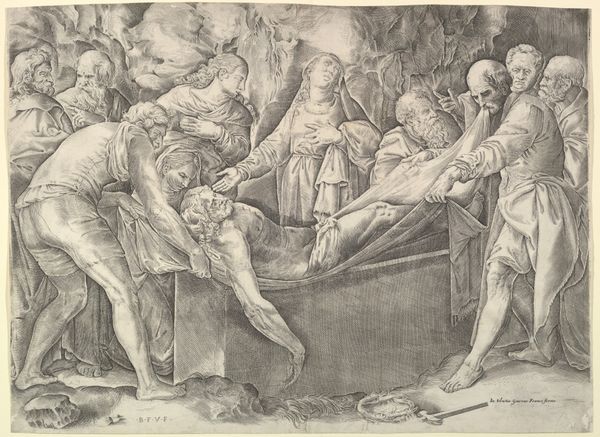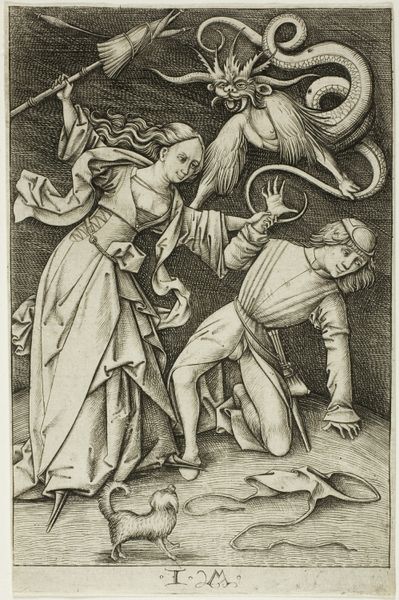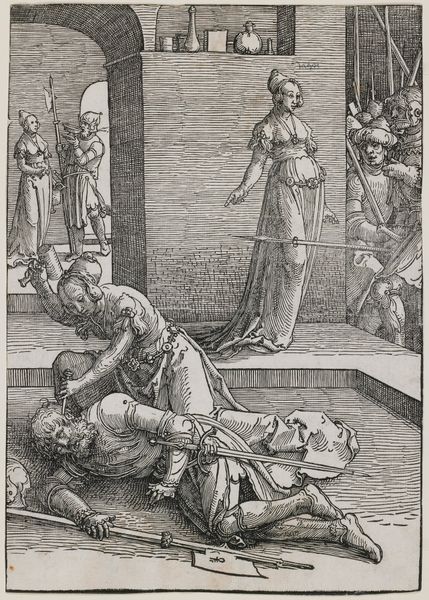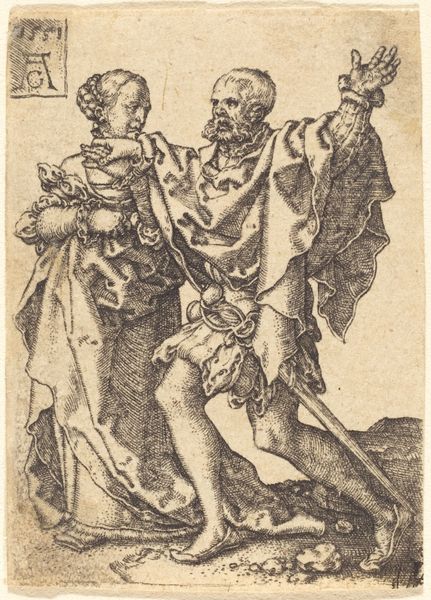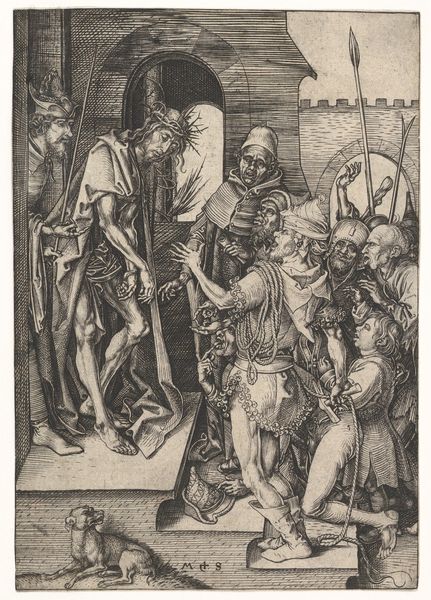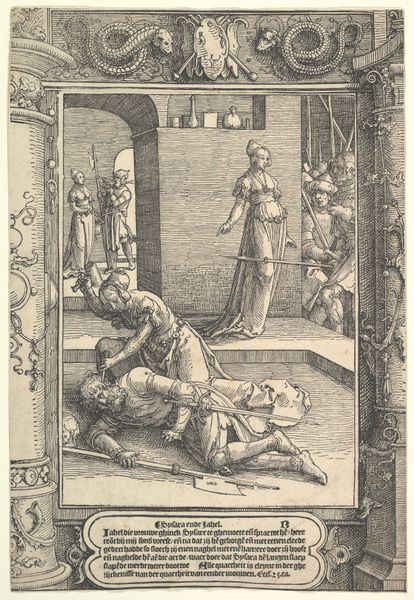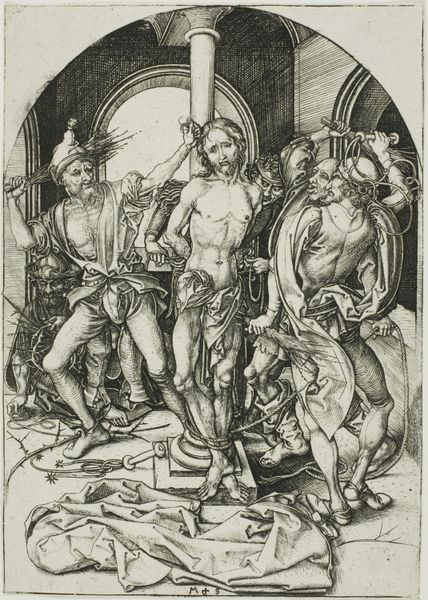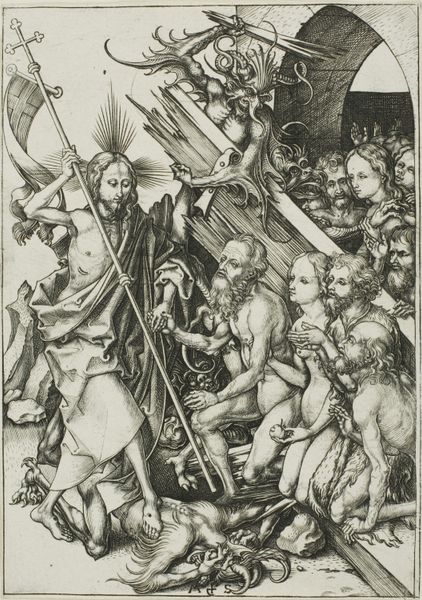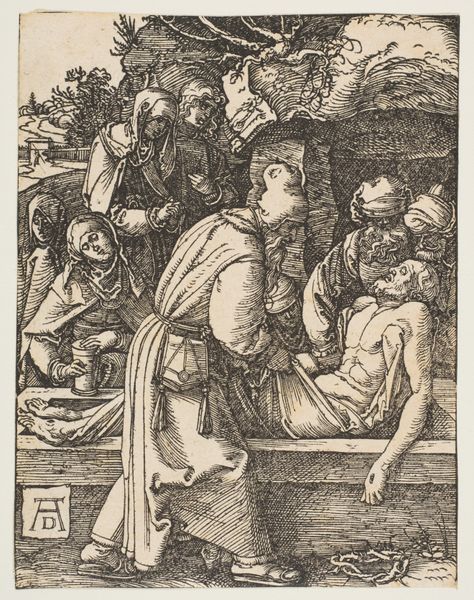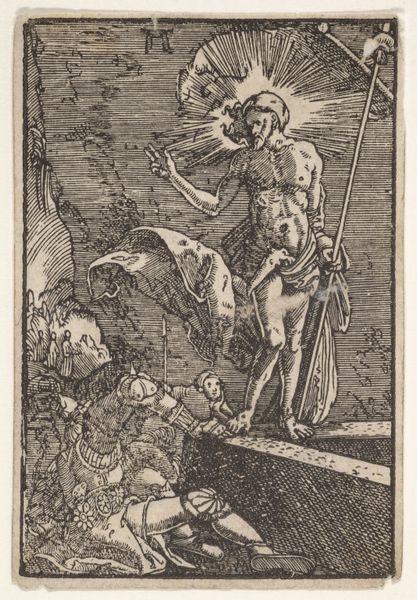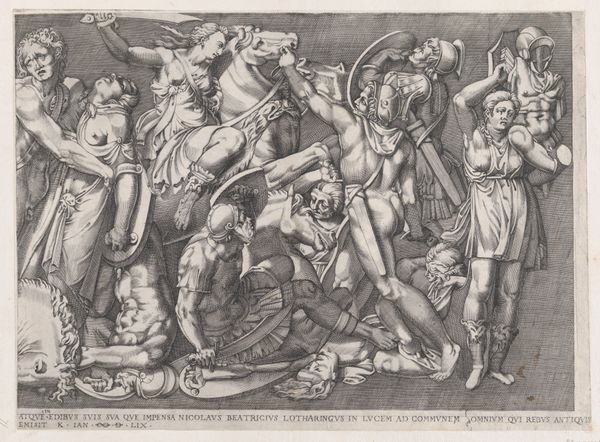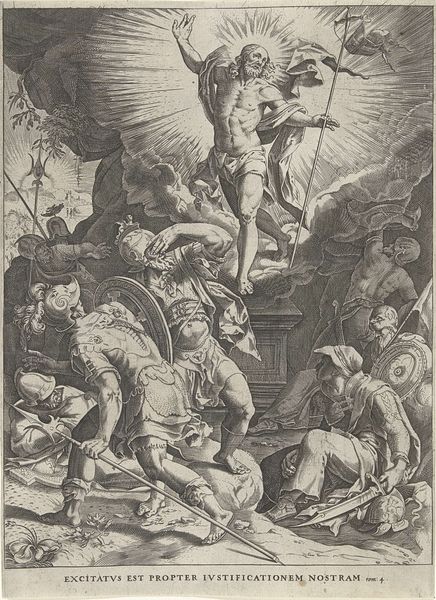
tempera, painting
#
portrait
#
medieval
#
narrative-art
#
tempera
#
painting
#
figuration
#
underpainting
#
12_15th-century
#
painting painterly
#
painting art
#
history-painting
#
italian-renaissance
Dimensions: 40 x 40.5 x 0.5 cm
Copyright: Public Domain
Curator: This panel depicts “The Martyrdom of Saints Simon and Jude,” painted by Stefan Lochner after 1435. It’s tempera on wood, held here at the Städel Museum. Editor: The first thing that strikes me is how vividly the violence is rendered, and strangely, how much of the material reality seeps into the way it’s been composed: the weight of the swords, the sheen on what appears to be chainmail on some figures, the earthy palette… it all speaks volumes. Curator: Yes! And Lochner's rendering is almost dreamlike. It feels suspended, doesn’t it? A sort of ghastly beauty in the composition... look how the figures almost elegantly arrange themselves around the central act, as if choreographed. It's almost as if Lochner finds beauty in the horror of it. What do you think of the halos? The two saints are wearing golden haloes which, contrast heavily against the barbaric beheadings in such a way as to almost trivialize them? Editor: Exactly! The use of tempera contributes to this surreal quality. Its quick-drying nature allows for those precise, almost jewel-like details. Each fabric, each weapon looks distinctly *made*. But tell me, what does trivialize, how? Perhaps the gold reflects, in its luxurious sheen, the patrons of this very piece? Who produced the raw materials that ended up composing the halos, as well as the implements for carrying out the killings themselves? Curator: Oh, a sobering thought. One can easily get lost in the prettiness of medieval art, completely missing the forest for the trees. Perhaps I find them almost dismissive precisely *because* they’re precious. How ironic it is that this “preciousness” of materials contributes towards and celebrates unspeakable barbarism! Editor: Absolutely. And it makes me consider the broader role of art during this period—a dance between displaying wealth and power and relaying religious narratives and I can't help but to ask about who were these works intended to edify, and at what cost? Were there guild workshops involved and to what degree do we celebrate artistry at the literal, visceral, and moral expense of humanity? The means of artistic creation were inextricably linked to the means of socio-economic subjugation at the end of the day, it is always worth remembering. Curator: It’s true. A deeply troubling thought about how beauty, divinity, barbarism, and the base realities of resource extraction collide so brutally here. That is quite literally arresting! Editor: Thank you, and it’s important to stress the importance of how artistic visions cannot truly stand divorced from what is "really real," such as materials, process, money and manpower.
Comments
Join the conversation
Join millions of artists and users on Artera today and experience the ultimate creative platform.

